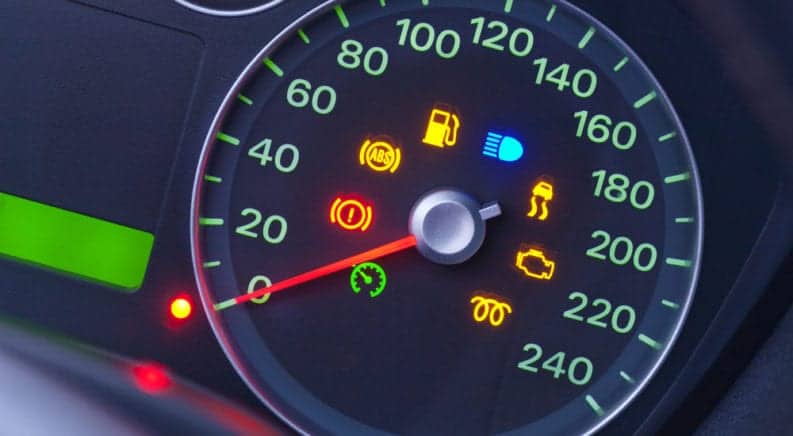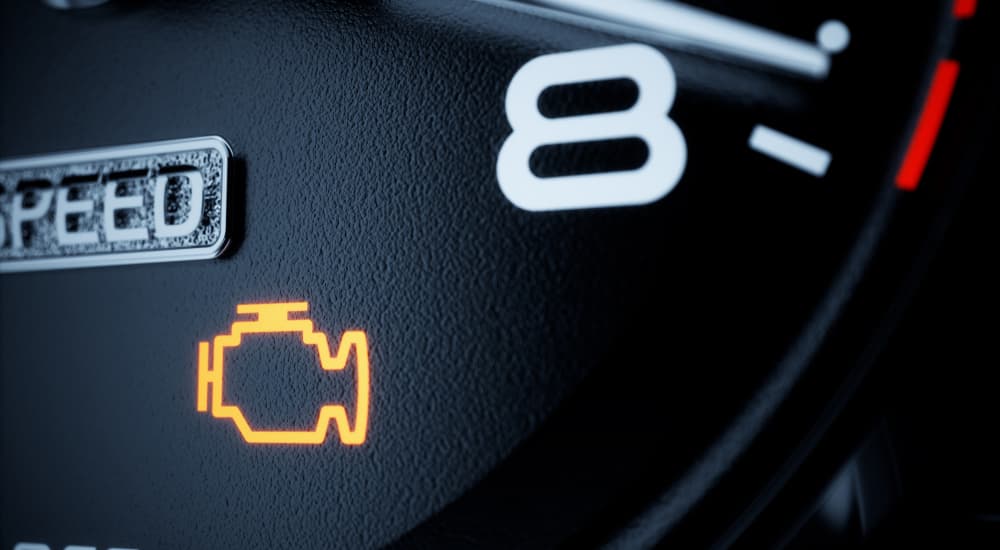Imagine that your car could talk. Consider how easy it would be to care for that vehicle if it were able to tell you anytime something was wrong with it, or that it had concerns about its own well-being. Considering that many drivers lack advanced automotive know-how, it’s easy to appreciate just how much that would simplify vehicle maintenance. But here’s the thing: your car can talk. It already tells you when something is wrong, or when it’s concerned about its own well-being. How? Through its dashboard ‘Warning Lights’ or ‘Vehicle Warning Indicators’ (VWI).
But it’s important to realize that VWI are far from universal. First, one can expect differences in the warning lights based on both make and model. Slight nuances in design language come into play as well. That said, it’s important to familiarize yourself with the warning lights in your vehicle, as presented by the manufacturer in the manual (or in online reference materials).
For the sake of this article, however, we’ll explore some of the most common VWI – and what your car, van, crossover, SUV or truck is trying to tell you if any of these bright, amber or red lights happen to make an appearance.
Check Engine
Arguably the most infamous and unwelcome of VWI, the Check Engine light (or ‘Malfunction Indicator Lamp’) is bound to put a damper on anyone’s day. In fact, the MIL moniker is probably more accurate since an illuminated MIL might not mean an issue with the engine itself. In fact, it could be caused by something as simple as a loose gas cap, or something as costly as the need to replace a catalytic converter.
It’s also not uncommon for an untrained eye to confuse the MIL with the ‘Service Vehicle Soon’ VWI. We’ll get to the latter further on, but the MIL is certainly deserving of immediate attention to determine the issue at hand.
Regardless of the issue, a garage or dealership will be able to run a diagnostic check-up, confirming the issue by detecting a diagnostic trouble code. These codes, made standard in all vehicles in the mid-90’s, formed a consistent bridge between all automakers. Diagnostic readers are available for purchase at the retail level as well but are only helpful in the hands of someone with the automotive skillset to interpret the data and act as needed to fix the issue.
And remember, a vehicle with an illuminated MIL will be ineligible from earning its required state inspection sticker. Considering an estimate that 10% of all cars on the road (at any time) have an illuminated MIL, some of them might find that reminder useful.
Coolant Temperature
Maintaining the operational temperature of a vehicle is crucial, based on the immense amount of heat generated by the combustion engine. This is why a number of systems exist within a vehicle to circulate coolant through the engine block, ensuring a cool and controlled temp. Thus, the illumination of a Coolant Temp VWI indicates that there the vehicle’s temperature is running too warm, due most likely to diminishing coolant levels (possibly from a leak), or an issue with the radiator or fan.
In the event that this light goes on, the most prudent step is to pull over and allow your vehicle to cool down. In the event that you’re a layperson, it would be most prudent to call for help, either from a professional or trusted party. Either way, the coolant levels should be checked alongside all other components of the coolant system.
Transmission Temperature
As with coolant and oil, transmission fluid must also be maintained in terms of temperature and viscosity. This ensures that your transmission maintains optimal operation, shifting seamlessly as needed. But whereas oil ‘burns off’, transmission fuel does not. If you’re overheating, a Transmission VWI is probably indicating an issue with your lubrication system. The issue could be a leak or break within the system, caused by hot weather, stop & go traffic or neglect.
Understanding that most normal transmissions operate at 175 degrees or below, a Transmission VWI indicates that you are now operating in excess of 250 degrees. Considering that this could result in a wide range of repairs, from affordable to costing in the thousands of dollars, heed the warning and make sure your vehicle receives immediate attention.
Oil Pressure Warning
Normally red in color, the Oil Pressure lamp is intended to indicate a pressing issue with your motor oil. Such issues include, but are not limited to (i) diminished oil levels (ii) low oil pressure (iii) a fault within the system, restricting circulation or (iv) the need to replace your oil pump.
Pull over. Turn off the engine. Remember that your vehicle requires motor oil to lubricate the numerous moving parts within the engine. Without sufficient lubrication, those metal components continue to run at high speeds, rubbing against one another, with little-or-no protection from wear. This could lead to full engine seizure and the costly need for engine repair, or replacement.
The ability to check one’s oil level might be among the most crucial tasks, manageable by even the most unskilled of drivers. Along with the ability to pump one’s gas, check air pressure and change a tire, the ability to check / add oil might prove a lifesaver one day. Either way, a vehicle with a persistent oil pressure warning light should be reviewed by a professional before being driven any significant distance.
Oil Change Reminder
While we recommend that you rely on duration (3-6 months) or mileage (3,000-6,000 miles) intervals to schedule oil changes, some vehicles are equipped with an “Oil Change Reminder’ VWI. That said, we don’t recommend reliance upon this light, or the assumption that your vehicle is equipped with one.
Battery
Your vehicle contains a rechargeable 12-volt battery which powers all electrical components. From headlights to the radio, ignition to the computer which regulates the engine itself, your vehicle’s operation is reliant upon the battery. As such, vehicles are equipped with an alternator and voltage regulator. These ensure that the battery remains properly charged at all times.
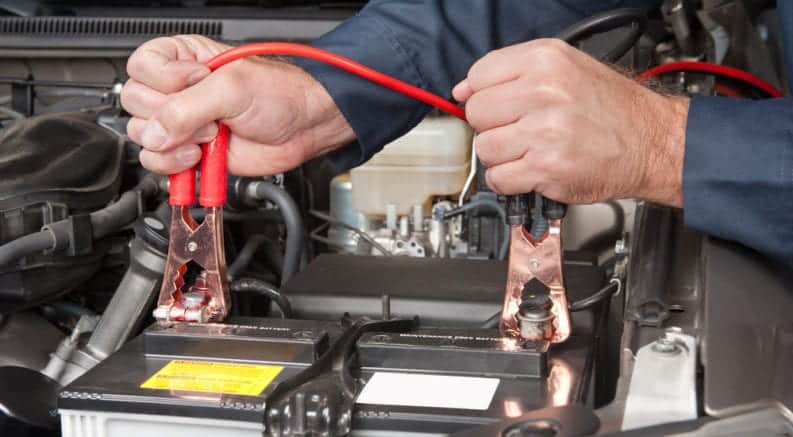
Thus, a battery VWI indicates that the recharging of your battery isn’t occurring in the manner, or at the strength required for continued operation. Failure to identify / address the issue will lead to the vehicle driving until the point that the battery can no longer sustain it. By far, the least critical in terms of risk of damage to your vehicle, a dead battery can prove just as convenient if you find yourself left stranded.
Brake System
An illuminated brake light could simply be a reminder that your parking brake is engaged. Should it remain illuminated once you’ve confirmed that the parking light is disengaged, it could mean that your braking systems low on fluid, or that you have a more serious issue.
Needless to say, the safe operation of any motor vehicle is reliant up its braking system. Thus, any VWI should prompt an immediate trip to your dealership, garage or service center.
Tire Pressure Monitoring System
The TPMS is a great example of how modern technology has made a task (in this case, monitoring one’s tire pressure) immensely more simple. Proper tire inflation is crucial to your vehicle’s handling, ability to carry loads, disperse water and reduce its rolling resistance.
Granted, issues can result from both under and overinflation that will affect tire longevity and overall safety. That said, the TPMS VWI will only illuminate in the case that your pressure is too low. Heed the warning, and take the first opportunity to restore the required tire pressure in all tires. And while the TPMS is a helpful warning system, it should never replace the manual act of regular tire pressure checks. Remember, sensors can malfunction.
Traction Control / ESP
Beginning in 2012, traction control was made a standard feature in all vehicles. Working in conjunction with the antilock brake system, it creates the foundation of the vehicle’s stability control. The Traction Control regulates traction during acceleration while the ABS does the same during braking.
In the event of seasonal driving (ie: winter road conditions) or excessively wet roads, traction control is crucial to continued and safe operation. As such, failure to identify (and fix) a faulty system could prove dangerous.
Service Vehicle Soon
Told you we’d get to this one a little later. This is something of a catch-all warning lights that indicates one of several possible problems has arisen. In general, this light is tied to the body control module (BCM) in your vehicle, which is responsible for monitoring all sorts of different systems in your vehicle – everything from your lights to traction control. Unfortunately, that means it can be hard to tell exactly what needs work when you see this light.
If you are driving when this light comes on, then safely pull off the road and come to a stop where you won’t be in danger. Leave your vehicle running, in park, and step out to check all your lights and make sure they’re still working. If your lights are fine, that means it’s something else, and you’ll need to go to a service professional for a proper diagnosis. No matter what, don’t hesitate – this is a big one, so act immediately to keep your vehicle in a safe condition.
Airbag Indicator
If you see this warning light, then it usually means something is wrong with your vehicle’s airbag system. Exactly what the issue is, however, requires the use of proper diagnostic tools – so this isn’t something you can readily just spot yourself. Since your airbags are an intrinsic part of your vehicle’s safety system, this is another light that you need to respond to promptly. It might not be as critical as an issue with your engine, but a defective airbag can fail to protect you in a collision, or actually cause injuries when it deploys.
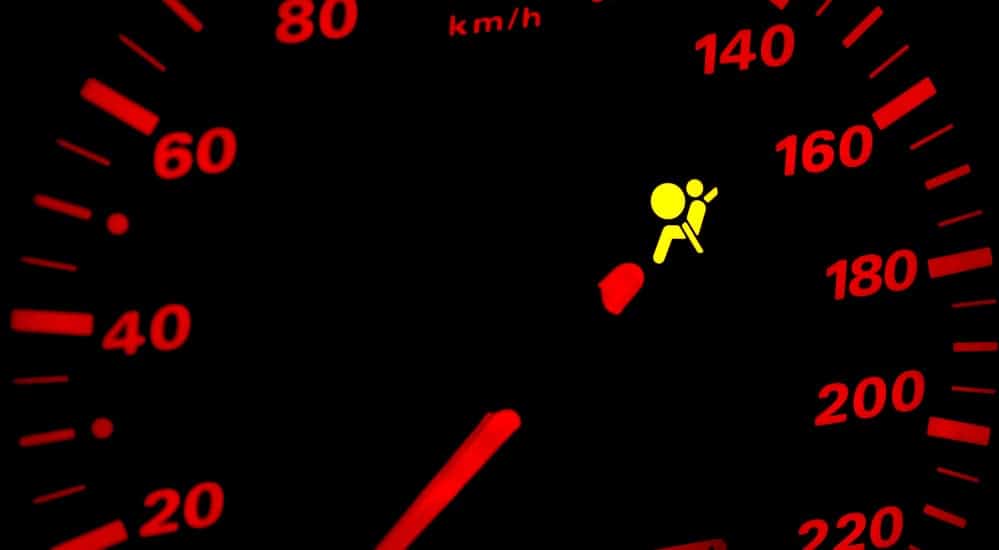
Steering Lock
This is part of theft-prevention systems in most vehicles, though you won’t find it in all older models. If you see this light, it means the steering wheel is locked and cannot be moved. For some vehicles, all you have to do to address this light is to insert your key into the ignition, and the steering wheel will once again move for you, others require more steps. If you see that this warning light is on when you first get into your car, then it might mean someone else was in there trying to move the wheel. Read more on Yourmechanic.com.
Windshield Washer Fluid
In fairness, this is pretty far down on the list of critical issues that you need to address with absolute haste. However, if you see this light, then it means your windshield wiper fluid is low and needs to be filled. Remember that your windshield wiper fluid is one of those things you might not think about too often, but you want to know it’s there when you need it. Plus, you can use this as an opportunity to check other things, like your tire pressure, oil level, and battery life.
Headlight and Brake Lights
Depending on your vehicle, this might be one light or two different warning lights – your owner’s manual can tell you which. In either case, when you see this warning light come on, it means you need to check the lamps in your headlights or brake lights. This is pretty easy – start your vehicle, turn on your lights, make sure you’re in park, then get out and walk around your car to check your lights. Make sure you replace dimmed or burned out lamps as soon as possible – not only will this make you a safer driver in the evening, but help you avoid a costly ticket.
Catalytic Converter
This is a surprisingly specific warning light compared to some others, and a very helpful one. The catalytic converter is part of your vehicle’s exhaust system, which is responsible for breaking down toxic gases produced by your engine. If you see this warning light, then it often means your catalytic converter is overheating or not operating properly. Be sure to have your exhaust system checked out right away – a flaw in that system can be very dangerous if it is exposing you to gases from your engine.
Shift Lock
Also called a “press brake pedal” light (for reasons that will quickly become obvious) this is one of those warning lights that makes you feel a little foolish. If you see this light come on, then you need to push the brake down on your vehicle when you try to turn your ignition. Nothing is wrong; you’re just getting a bit ahead of yourself. In some vehicles, a similar light can indicate you need to push the clutch instead. Read more about this light on Dashboardsymbols.com.
Seatbelt Reminder
This warning light is just there to remind you that you don’t have your seatbelt on. In a lot of modern vehicles, the light will be joined by a surprisingly loud “ding” that will echo menacingly throughout the cabin. Put your seatbelt on, and the light will go off. Not only will this help save your life in a collision, but your friends will thank you for not making them listen to the dinging.
Fuel Indicator
This is one that can really help you avoid a serious inconvenience, but don’t over-rely on it. If you see this warning light, then you are getting low on fuel and need to stop at the closest gas station you find. This is a bit of an infamous warning light due to some drivers relying on it to let them know when to get gas. Don’t Do This! Keep an eye on your fuel gauge and rely on it – this warning light might mean you have less fuel than you think, or it might malfunction and leave you stranded with an empty gas tank.
Oh, and this light will often have a tiny arrow with it, which points to the side of the vehicle your gas cap is on. Some cars also have a warning light to let you know when the cap is not secure.
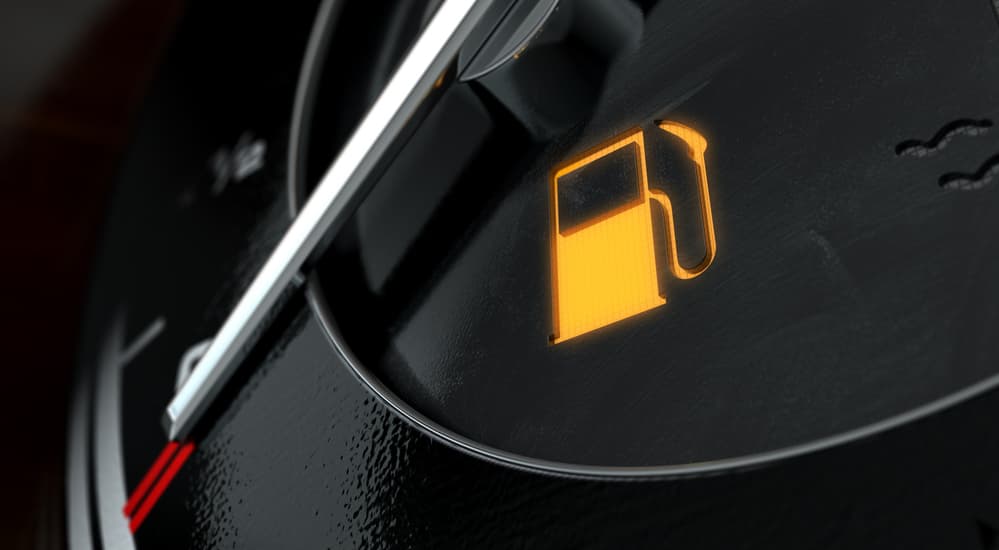
Fog Light Indicator
While some warning lights are there to alert you to a problem, others help you keep track of what you’re doing as a driver. This indicator light lets you know that your fog lamps are currently illuminated. It’s simply a reminder so that you know to turn them off before exiting the vehicle, or when you no longer need them.
Security Indicator
This can be either a system warning light or a reminder, depending on what it’s trying to tell you. In general, a security indicator is connected to your vehicle’s security system, so it might be illuminated to let you know the system is on or that you need a key with the proper fob to start the vehicle. It can also let you know the security system is malfunctioning in some way so that you can take it to a shop for repair.
Cruise Control Indicator
This is another indicator light, like the fog light one. Rather than a warning light that something is wrong, this is there to remind you that you have cruise control engaged. As soon as you press the brake or otherwise disengage the cruise control system, the light will go off. In other words, this is just a good reminder for you as a driver. Autoblog helps explain this light as well.
Car Doors Ajar
These warning lights are there to remind you or alert you to the fact that one or more doors are currently open or not securely shut on your vehicle. In some cases, you might have lights that let you know which door specifically, or if it’s in the front or rear. Other times, there may just be one light that warns you about any of the doors. In most cases, you can fix this issue by safely opening and closing all your doors until it goes off.
A Good Start…
While these are only a handful of the Vehicle Warning Indicators that exist in your dashboard, they are among the most significant and the most critical. Here at CheckEngine.com we’ll continue to explore each in more depth, as well as those we didn’t cover as part of this article. Our hope is that we can improve the manner in which your vehicle communicates with you, and the manner in which you respond to your vehicle. Is there anything you’d like to know more about here at CheckEngine.com? Let us know, and we’ll be glad to help.

